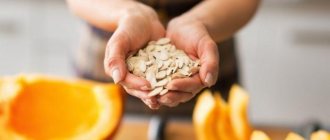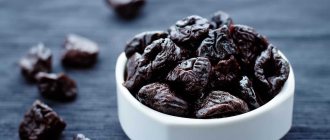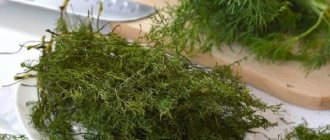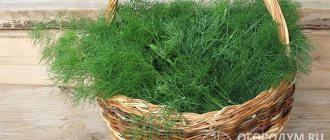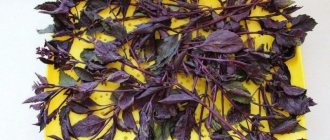Collection and preparation
- Select the herbs you want to dry. To preserve the color and texture of the plant, a specific drying method must be selected for each species. Herbs with dense leaves (bay leaves, rosemary, thyme and sage) can be simply spread out or hung in a dark, dry place. Broad-leaved tender varieties are more sensitive to moisture (basil, parsley, mint, tarragon, mint) and require a faster drying process.
- Collection of herbs. Most herbs are recommended to be collected before flowering. However, it all depends on the condition that will allow the plants to retain their shape and aroma. If your goal is to get flowers, then it makes sense to wait until the buds open. As for the time of day, it is better to cut the herbs after the dew has evaporated, but before all the volatile essential oils have evaporated from them under the influence of the sun.
- Preparing for drying. Herbs will be preserved better if you begin to prepare them for the drying process immediately after harvesting.
- Wash the herbs if necessary. Some herbs must first be washed under running cold water, then any remaining debris, insects, or leaves with stains or defects must be removed.
Note: Harvesting greens for the winter
Method 1: Drying your herb quickly and easily
This method allows you to obtain fresh and pure herbs for cooking.
- Place a clean kitchen towel on a suitable surface, such as a kitchen chair or windowsill.
- Wash the herbs thoroughly. Use as little water as possible to avoid damaging the leaves. Then shake them gently over the sink to remove excess moisture.
- Place the plants on the prepared cloth so that they do not overlap each other.
- Let them dry in a heated kitchen. Once the herbs are dry enough, use them for their intended purpose.
Method 2: Drying the herb in the sun or outdoors
This method is not the best, because when exposed to direct sunlight, the plants will quickly wilt and lose their taste. This method is suitable when you need to obtain seeds or for compiling a herbarium.
- Tie the herbs together with ribbon or string.
- Hang them down with flowers in a sunny spot. Leave it for a few days, checking from time to time.
- You can also wrap the plants in a paper bag, which will protect them from sunlight and also prevent the seeds from falling.
- When the stems and leaves are brittle and brittle, they can be stored.
Method 3: Drying your herb indoors
Indoor drying is preferred over outdoor drying to preserve the aroma, color and quality of the herbs. This method is recommended for herbs with soft leaves.
- Tie the herbs together to make a small bouquet.
- Drying times may vary if you are binding different types of herbs, so consider the drying times specific to each variety. It is also better if the bouquets are the same size, this will make them easier to store and use.
- A paper bag will help speed up the drying process and prevent debris and seeds from falling out. On the other hand, by letting them dry without the bag, you can get beautiful bouquets that will serve as decor in your home.
- Find a suitable drying area. It should be dry and well ventilated. Ladders, beams, hangers, nails, etc. can be used for this purpose.
- It will take approximately 5 days to several weeks depending on the type of herb you are drying.
Method 4. Drying in the oven
- Set the oven to the lowest temperature. Leave the door open.
- Place a sheet of parchment paper on a wired baking sheet and add herbs.
- During the process, they must be turned over to dry evenly.
Method 5: Microwave drying
If you need dry herbs quickly, this method is perfect! Be prepared that drying times can vary greatly depending on the type of herb you want to dry.
- Place the plants in an even layer on a plate.
- Set the timer to 2 minutes or to the defrost function. Then let stand for 10 minutes. If the plants are not dry, then turn on the microwave for another minute and so on until the desired result is achieved.
- Herbs that tend to air dry well (such as thyme) need less time in the microwave than herbs that dry less well (such as basil).
Method 6. Drying using desiccant
Herbs dried in this way can be used to create decorative crafts. You should not use this method if you intend to use the herbs as food or medicine.
- Choose a desiccant. Desiccant is a substance that causes plants to dry out. Cornmeal, sand, borax, silica gel or even cat litter are suitable desiccant agents for herbs.
- Pour 2.5 cm of the selected substance into a glass or plastic container. Glass or plastic will not absorb moisture.
- Arrange the herbs. Make sure the flowers are not touching each other. Leaves and petals that are close together should be separated to allow the desiccant to dry out all parts of the plant. Carefully fill the plants, making sure that the substance gets into all the recesses of the flower.
- Once the plants are tough and dry to the touch, remove them and brush off any remaining desiccant with a brush.
- Avoid over-drying the plants, as they may crumble.
Method 7. Drying in a vase
Some herbs, such as fennel, rosemary, and immortelle, dry out easily even in a bouquet.
- Place the plants in a vase or other container without water.
- Let them dry, making sure to check them from time to time to prevent mold or rot.
Method 8: Pressure Drying
Press-dried herbs can be used to decorate albums, frames, bookmarks, collages and cards.
- Select the flowers or leaves you want to dry.
- Carefully fold the book between the sheets; you can put some weight on top.
- After 30 days, check the plants; during this period they become flat and dry.
Adviсe
- All dried herbs should be stored in airtight containers away from direct sunlight. For culinary purposes, use herbs within 6 months after drying, after which they begin to lose aroma and taste.
- You can also freeze herbs. This method is recommended when the aroma of the plant is more important than its appearance.
- Many plants lose color and shape when they wither. Drying herbs is more of an art that you learn through experimentation and making mistakes.
- Use elastic ribbons to tie bouquets so that when they dry, the stems will not fall out of the bouquet.
- Silica gel is poison. Keep it out of the reach of children and animals, wear a mask when working, and do not eat the herb that has been dried with silica gel.
- Poorly dried grass rots and becomes moldy; if this happens, throw it away.
- Avoid drying herbs in high humidity areas such as the bathroom or kitchen.
- Avoid too much heat when drying to prevent the herbs from breaking down.
general information
Is it possible to dry apples in the microwave? Scientists have proven that dried apples help the body fight various diseases . They strengthen blood vessels, regulate cholesterol levels, and are an excellent means of preventing osteoporosis.
Considering these properties of dried fruits, it is recommended to include about 75 g of dried apples in the diet . This amount in the required equivalent contains such nutritional elements as:
- B vitamins;
- ascorbic acid;
- vitamin E;
- iron;
- copper;
- villages;
- iodine.
And, in addition, dried fruits contain fiber , which improves digestion and stabilizes intestinal function.
To get a supply of these useful elements , apples can be dried in the microwave. You can dry fruits in this household appliance, but it is important to do it correctly so as not to dry out the apples.
How to collect medicinal and spicy plants?
At the market or in the pharmacy you can find a lot of mixtures of dry medicinal and spicy mixtures. They are used in folk medicine, home cosmetics and cooking. Their quality is sometimes highly questionable. Another thing is mixtures collected with your own hands in an environmentally friendly place. But in order for them to be truly useful, they need to be collected correctly.
Collection rules:
- All herbs, medicinal and spicy, should be collected before flowering, when they have just gained color. Plants that have already bloomed have a weaker aroma and lower essential oil content;
- The grass is plucked in the morning, when the dew has already dried. This is done in dry, clear weather;
- Plants should only be collected in an environmentally friendly place. This could be your garden or vegetable garden, if you live far from roads and factories, a meadow or forest, next to which there are no highways or polluting industries.
How to dry raw materials correctly?
Even the best plant materials can be ruined by improper drying.
Plants need to be dried following a certain sequence of actions:
- Be sure to wash herbs grown and collected on your own plot: parsley, dill, basil, mint and others. Shake off the water and dry, spreading on towels;
- plants collected from a meadow or forest do not need to be washed. Wash them only if they are covered with dust. But it’s better not to collect such things at all;
- disassemble the collected raw materials into small bundles and tie them with thread. These bouquets must be hung with the flowers facing down. The best place for natural drying of plants is a well-ventilated and dark room. This could be a shed or storage room. Plants should not be dried in direct sunlight, otherwise they will lose their beneficial properties and aroma. They don't like humidity either. Stems and leaves may rot in wet conditions;
- drying naturally takes from several days to 2-3 weeks. But if you need to dry the herb quickly, you can do it in the microwave at home. To do this, place a small amount of herbs between two paper napkins and microwave them. How long should you microwave herbs? Drying time is 2 minutes. Then the raw materials are removed and left for some time on napkins to completely evaporate the moisture. However, this drying method is less good than the natural one. With it, the beneficial properties of herbs may be lost;
- Properly dried plants do not change their color and aroma. The smell of herbs can become even stronger and richer. The finished raw material is dry to the touch, crumbles and breaks easily in your hands.
How to properly store dried herbs?
Completely dried plant materials can be stored in several ways.
- In tightly closed glass jars and containers. To do this, the dried herb is crushed to a size convenient for use and poured into washed, dry containers;
- In thick paper bags. This way you can store the herbs whole, not crushed. With this method, they retain their beneficial qualities longer.
- In dense fabric bags. Plants can be stored either whole or chopped. The main thing is to keep them away from odorous substances so that they do not lose their aroma.
How long do dried herbs last?
Properly dried plants can be stored for up to two years. In this case, it is necessary to observe the storage conditions and avoid getting moisture into the dishes or bag with the mixtures.
Check your supplies periodically for mold or harmful bugs. If spoilage is detected, the dried plants must be thrown away and cannot be used.
For herbal teas, medicinal and cosmetic products, it is better to use plants from the first year of storage. Those that last longer are also suitable for baths or compresses. For culinary needs, plants are harvested for a year. And next season they use fresh ones and dry new ones.
Drying herbs is a very useful and exciting activity. Knowing how to quickly dry herbs at home, try doing it yourself, drying plants for your table or for medicinal purposes. You will provide your family with aromatic and healthy teas, delicious dishes, and healing baths. Be healthy!
Preparation
Attention!
Carrots for drying are selected in the same way as for long-term storage - late or mid-ripening, with a high content of dry components, homogeneous pulp, without greens and coarsened core.
First, the fruits are freed from the tops by cutting them off and removing the green neck at the base.
(you can find out more nuances about how to trim root crops). Next, each root crop must be carefully inspected for damage, rotten areas and cuts must be cut off. It is necessary to do this under running water; you can even use a hard sponge or brush.
The next step is peeling.
If you have to process a large number of root vegetables, it is better to use a vegetable peeler - this will significantly speed up the process. Before drying, the carrots will have to be blanched.
To do this, boil water in a large container and immerse the fruits in it. After 15-20 minutes, pierce the carrots with a toothpick - it should go into the pulp with little effort. After heat treatment, cool the product under running cold water and pat dry with a towel. The duration of blanching depends on the size of the fruit - small ones “reach” earlier - in 12 minutes, large ones - in 20 minutes.
You can chop the root vegetable for drying arbitrarily - into cubes, circles, quarters, strips or grate. Drying raw carrots is also allowed, without blanching.
DIY herb dryer
Making a dryer with your own hands is not a difficult task. They make a simple structure consisting of a base and mesh shelves attached to it. Herbs are placed on these shelves. This saves space indoors or under a canopy and ensures good ventilation for drying.
Or you can make a dryer with heating and forced ventilation. They make a body - something like a large box. Mesh shelves are fixed inside. A fan and heating element are installed at the bottom. The heating element operates either constantly or is regulated by a timer or temperature sensor, which turns the heating off and on. A necessary condition is that the upper part of the structure is mesh so that the forced air leaves the dryer. The lower part should also allow air flow to flow freely.
Dried tarragon (tarragon) - prepared at home
How to grow watermelon at home in the garden
It is harvested in summer and autumn. Important! Tarragon contains very volatile essential oils, so it is very demanding in terms of preparation and storage. Otherwise, with the wrong approach, it loses its taste and aroma.
Tarragon
It is dried as follows.
The branches are washed and then laid out on a clean, dry surface in the shade. The degree of drying is determined by the fragility of the branches. If they break when bent, then dry enough. Then the leaves are torn off the branches and immediately poured into jars. Otherwise, in an open space, the herbal aroma will quickly disappear.
You can also dry it in a dryer, but the temperature should not exceed 35˚C. But the first method is more preferable.
How to store dried mushrooms?
Dried mushrooms must be stored in dry, ventilated areas inaccessible to moisture.
If, for some reason, the mushrooms begin to darken, they must be urgently sorted out and dried.
You can get rid of excess air in jars using the following proposed method.
Pour a small amount of alcohol solution into the inside of the lid. Then light it and quickly close the jar. Thus, the fire will use up all the oxygen that was inside.
Before you start cooking food with the addition of mushrooms, they must be cleaned of dirt and dust with a brush.
Additional Information
I didn’t precisely measure the volume, I just cut up the shoots and leaves, rinsed them under cold water in a colander and laid them out on a napkin to dry. Dried for 5 minutes. at the lowest power. The last time I tried to dry the branches of the bush (a remedy for constipation), 5 minutes. It turned out to be not enough, I added 5 more, and then 10 more. As a result, they crumble like leaves. And most importantly, the leaves retain their natural color. In the 1st photo - parsley, in the 2nd and 3rd - basil, in the last one - a remedy for constipation.
Drying methods
Outdoors
The simplest drying option that does not require the use of any equipment.
It is worth understanding that it should be carried out in the summer or at the end of spring - beginning of autumn, so that the products can be dried in a fairly short time.
- Before drying, all mushrooms are cut into slices. You can separate the stem to make drying faster.
- The plates are strung on a fishing line so that they do not touch each other, otherwise the raw materials at the points of contact will not dry out well and will not be stored. You can also use wooden trays or paper, but in this case you will need a large enough area to lay out the raw materials.
- All prepared mushrooms are placed in a place where they will not be exposed to dust or rain. In this case, the place should be well warmed by the sun and well ventilated so that drying occurs faster.
- After laying out or hanging the products, cover everything with a net with small cells to prevent flies from landing.
It is worth remembering that the entire product must dry in 1-2 days, otherwise you will overdry it and it will simply begin to crumble.
Did you know?
Since the mushroom is considered a cross between animals and plants, we can say that this living organism is the largest creature on earth. This proves it, which was found in Oregon. Its area was 900 hectares.
In the oven
Drying mushrooms in the oven is different in that in this case more depends on you than when drying them in the fresh air, so you should understand that improvisation in this case can ruin a large amount of raw materials.
An oven that has an additional airflow function is best suited for drying, since without it you will have to open the door to have at least some air circulation. If there is no airflow, the drying process will slow down significantly.
- We need to take iron grates, which are usually used for grilling, place mushrooms on them in one layer and put them in the oven.
- Set the temperature to around 60-70° C and, if necessary, open the oven door slightly.
- Every 15-20 minutes, the racks need to be swapped so that all the mushrooms dry equally well.
As for drying time, it is quite difficult to determine.
Firstly, each type has a different amount of moisture, secondly, a lot depends on the dimensions of the oven and the size of the baking tray, and thirdly, on the quality of the blowing. You need to dry until they shrink several times. At the same time, they should not feel oily to the touch, but rather dry.
Important!
Do not raise the temperature, otherwise you will bake the mushrooms rather than dry them.
In an electric dryer
Perhaps you will get the highest quality product if you dry it in. Of course, technology will not replace all the delights of natural drying, but you certainly cannot spoil the product.
- The raw materials are cleaned and cut into thin slices. Choose the thickness yourself, but take into account the fact that if the product is small, then it makes no sense to cut it into slices that are too thin.
- Everything is laid out in one layer on each tier of the dryer, and the temperature is set to 55° C.
- We wait from 2 to 6 hours until our mushrooms are completely dry.
This variation in time is due to the fact that the thickness of the cut plates directly affects the drying time.
For this reason, the time has to be determined by eye, periodically checking readiness. As a rule, absolutely all mushrooms can be dried in this way - both tubular () and lamellar, especially in such home conditions that do not allow drying the products in the open air.
In the microwave
Let's also consider the option of how to dry mushrooms in the microwave.
This cannot be said to be the optimal technique for drying, but in the absence of other options, it can also be used for our purposes.
- We clean and cut the raw materials.
- Take a plate or baking sheet that is suitable for the microwave. Ideally, of course, you need to use a wire rack, but in the absence of one, you can use any non-metal utensils.
- We lay everything out in a thin layer, set it to 100-180 W, and “dry” for about 20 minutes.
- After the specified time has passed, the microwave must be opened for 15 minutes so that all the moisture comes out. Then close and repeat again.
- The optimal number of repetitions is 2-3 times, but if the mushrooms are cut into thick slices, then you can increase it up to 4-5 times.
It is worth remembering that at the end you can get both a finished product and a kind of semi-finished product, which will still need to be dried outside. It all depends on the size and wateriness of the mushroom.
In the oven
This method is considered classic. If it is necessary to dry a small amount of herbs, an ordinary oven is used. Its advantage is that it releases heat to the plants slowly and evenly. Typically the oven is not lit specifically to dry the herbs, but rather the heat from after cooking is used. The temperature inside the structure should not exceed +60 °C. The main disadvantage of this method is the inability to adjust the temperature and improve air circulation. Kilns are also used when large quantities of herbs need to be dried.
How to dry greens in the microwave
If you like to season your dishes with various herbs and spices, you can make preparations for the winter that will cost much less than buying them in the winter.
How and what kind of greens can be dried in the microwave? Dill, parsley, green onions, basil and others are suitable. First, prepare: wash, trim the roots and dry a little on a towel or napkin. It should be noted that dill does not need to be dried before chopping. It will be enough to rinse it and shake off excess water.
Then finely chop, place on a paper napkin, and cover with the second part or another napkin on top
and place in the microwave. Place a glass of water there to create additional load for the microwave.
You need to dry the greens for about three minutes at full power. Periodically, be sure to check the readiness of the greens and, if necessary, increase the time by thirty seconds. Since depending on the size of the portion, the drying time may vary slightly. It is advisable not to dry large quantities at once. It is better to do this in two batches, evenly placing the greens on a napkin, which will improve the quality of the process. Dried greens will become brittle and change color. This indicates that the drying process is complete.
You can also dry it with whole branches, but you will have to dry it in the air, since the leaves will dry out, but the branches will still be wet.
Drying mushrooms, herbs, vegetables and fruits in the microwave saves a lot of time and makes the process much easier. Due to the fact that the process takes a short period of time, the products retain a significant amount of nutrients that are so necessary for the body during the winter.
From early summer until late autumn, we have the opportunity to enjoy the natural taste and aroma of fresh vegetables and fruits, while consuming all the vitamins and microelements our bodies need in their natural form. To preserve a rich harvest and enjoy it in winter, we make preserves: salads, jams, compotes. However, as a result of heat treatment, vegetables lose their beneficial qualities. To prevent this from happening, the most effective way is to dry them.
Various types of drying machines are used in manufacturing industries to dry vegetables. At home, you can dry vegetables in the oven or in the microwave. The most effective is, of course, .
In a microwave oven, the product being dried is heated under the influence of electromagnetic vibrations of water molecules at ultra-high frequencies. Ultrahigh-frequency radiation, which is created by the magnetron, instantly penetrates deep into the dried product at a distance of 2.5-5 centimeters and sets water molecules in motion, as a result of which moisture evaporates from the product. The amount of heating in microwave radiation cannot exceed the boiling point of water, that is, 100 degrees. It is the speed of processing vegetables in the microwave that allows maximum preservation of their beneficial properties, natural taste, color and aroma.
The speed and uniformity of microwave drying depends on the type of vegetables. Microwaves penetrate into the dried product to a depth of 2-3 centimeters from all sides. To make them more efficient in the microwave, they need to be cut into as even pieces as possible. Moreover, the finer the vegetables are cut, the less time they will take to dry, and, consequently, the less energy will be consumed. This is due to the fact that, penetrating into a vegetable to a depth of more than two centimeters, microwaves lose about 50% of their original power. Therefore, the basic rule for drying vegetables in the microwave is that the thinner the vegetables are cut, the faster they will dry.
If irregularly shaped vegetables are dried, larger pieces should be placed near the edge of the dish, as this is where they receive the maximum amount of energy. To ensure better drying results, vegetables should be turned over periodically.
Microwave ovens differ in the way they ensure uniform heating of food in the oven's working chamber. There are microwave ovens in which the dish rotates on a special glass stand, and ovens in which the processed products are stationary. Both methods are quite productive, but the first method is characterized by a higher degree of uniformity in heating the products.
Warming up is the first stage of drying vegetables in the microwave. Vegetables are heated from the inside under the influence of microwaves coming from a magnetron generating device, which converts electricity into electromagnetic waves. Using a built-in rotating antenna, electromagnetic waves penetrate into the working chamber, where electric current is excited in all conductive elements. Electric current creates the necessary heat and drying occurs. Microwave energy is supplied periodically, in cycles, which allows you to set the required speed of heating and drying vegetables.
There is no doubt that their presence in the daily diet helps due to the large amount of fiber in the blood and helps get rid of excess weight problems. In addition, they contain a large number of microelements and are a real storehouse of vitamins such as C, A, B9 and K.
The fruit’s great popularity is due to the fact that it contains practically no allergens, and with a calorie content of less than 50 kcal per 100 grams of product, it can be consumed even on a strict diet. It is not surprising that breeders have developed many varieties of apple trees that can grow in a wide variety of climatic conditions.
Excellent taste, beneficial properties and availability have allowed apples to take their rightful place in the diet of many people. In this regard, a large number of culinary recipes using them, as well as ways to store this perishable fruit, have appeared. As for winter supplies, housewives prefer to cook compotes and jam. But if we are talking about not only preserving, but also increasing useful qualities, then drying apples is best suited for this.
In the microwave this process will take very little time. And you certainly won’t have to, as before, string them on a thread and languish in a long wait. This method, due to the fact that the drying time of apples is reduced to a minimum, allows for the most efficient preservation of vitamins and microelements and increases the nutritional value of the final product due to
Recipe
Drying apples in the microwave is carried out in several stages:
- the ripest fruits are selected;
- they are washed and dried with a clean towel;
- the core is cut out and the apples are cut into rings, the thickness of which should be approximately 0.5 to 1 centimeter;
- the rings are placed in 1-2 layers on a large plate, which is best covered with a linen or cotton towel;
- if it is possible to adjust the power, then you need to set the value to 200 W, then turn on the microwave for 2.5 minutes.
As you can see, there is nothing complicated in the process itself, and drying apples in the microwave does not require supernatural efforts. But here, as everywhere else, there are some subtleties. For example, the drying temperature for apples varies somewhat depending on their variety and ripeness. This means the fruit may require additional time in the microwave, up to 4 minutes. Thus, the readiness of the apples is checked visually after 2.5 minutes, after which, if they are not completely dried, they must be returned to the oven for another 1.5 minutes.
For those who want their apples to be golden, we recommend soaking them for a few minutes in an ascorbic acid solution before placing them in the microwave. In addition to their beautiful appearance, this will give them additional sourness and enrich them even more with vitamin C.
Storage
If the dry grass crumbles easily in your hands, this means that it is ready and you can store it. Keep plants only in dry areas with good ventilation. It is best to place them in airtight glass jars. You can also use wooden or ceramic containers. Write on each of them what kind of herb is stored there and the time of its collection.
Now you know how to properly dry herbs for tea and seasonings for the winter. Remember that if the temperature is too high, plants lose their beneficial properties. Properly dried grass does not change its color, and the smell becomes even more intense.
Step-by-step instruction
How to dry apples in the microwave for the winter:
- Place the apples on a plate in the microwave.
- Turn on the oven in 200 W mode .
- Set the device timer for 3 minutes . Drying of apples occurs intermittently, so it is better to set the timer for 30 seconds , checking them every time after stopping the oven.
- Check readiness and, if necessary, turn on the oven for another half a minute.
- temperature should be slightly lower than the temperature at which the oven defrosts food.
- The readiness of apples is determined by the condition of the skin and pulp. The skin of the finished product becomes dull, and the flesh does not stick to your hands. If the slice is dried correctly, it will have a creamy color and will be soft to the touch.
Apples of early and medium varieties cook faster than winter ones . The readiness of winter apples is determined by their darker color.
Dry in the fresh air
If the weather outside is good and it’s hot in the summer, then it would be right to dry the dill without additional equipment - you won’t have to pay for electricity or gas. The method works both in the country and at home.
It is recommended to use pallets with a perforated bottom - plastic or metal. If you don’t have such a pallet on your farm, it’s very easy to make a replacement. The gauze needs to be pulled over the top of the box so that there is a void inside that allows air to pass through.
What to do:
- Spread the dill in a thin layer over a tray or cheesecloth.
- Leave for several days in a dry, shaded place.
We recommend: Eternal shine: how to properly clean gold and diamonds
You should not lay it out in the sun if you want the dill to remain green. Overheated in the sun on a hot day, it may well turn yellow. In addition, thick branches can dry out on the outside and remain damp on the inside. And this will inevitably lead to the formation of mold, and all the work will go down the drain.
In rainy weather, it is worth bringing the pallets into the house or at least under a shed - just not in the garage, otherwise the greenery will become saturated with the smell of gasoline.
What mushrooms are suitable for drying?
Before understanding all the intricacies of drying, it’s worth first talking about which ones can be dried.
It is the tubular mushrooms that are worth drying, since they, unlike lamellar mushrooms, do not acquire bitterness during the drying process.
The best types for drying:
- boletus;
All these types do not lose their taste during the drying process and do not acquire bitterness, so they can be used to prepare any dishes.
If you are not afraid of bitterness or know ways to deal with it, then you can dry the cherry blossoms. The list of suitable species does not include very small ones, such as mouse mushrooms. The thing is that during the drying process, raw materials lose up to 90% of their mass. And if the raw material already weighs less than 20-30 g, then there will be practically nothing left of it - it is better to preserve such species.
Drying plants in a basket or on a perforated surface
Some flowers and herbs dry quickly at room temperature in low-humidity homes. To do this, line the bottom of a wicker basket with a paper towel and spread the herbs in one layer. Air will circulate freely around the plants and help them dry out.
You can also use some kind of perforated surface, for example, a kitchen oven rack. To ensure air circulation, it can be placed on 2 supports. You need to cover it with a towel on top and you can lay out the herbs in a thin layer. The towel will serve here as a collector of small dried fragments.
A clothes drying rack covered with a fine linen cloth also works well.
This is the best method for drying red clover, calendula and chamomile flowers.
Drying berries
You can also dry berries in the microwave, as they are much healthier than in the form of jam. It is better to dry large berries - strawberries, grapes, cherries. For aromatic tea and compote, currants and raspberries (slightly unripe) are dried; you can also prepare rowan berries, blueberries, and chokeberries. Dried berries retain all the beneficial substances, and chokeberry (aka chokeberry) becomes less tart. The berries are selected whole, firm, and collected in warm, sunny weather.
Berries are dried almost the same way as greens:
- lay out on a tray or dish covered with a paper towel in small portions;
- cover the top with the same towel;
- the power is set to 200 W, the drying time is 3 – 5 minutes, since there is more moisture in the berries;
- It is necessary to dry in several stages, constantly checking the degree of readiness (every half a minute).
There are many options for using dry preparations, but first they need to be washed with running water and then soaked for several hours in cool water. Cooking will become easier, and the taste and aroma will be brighter.
There is no doubt that their presence in the daily diet helps due to the large amount of fiber in the blood and helps get rid of excess weight problems. In addition, they contain a large number of microelements and are a real storehouse of vitamins such as C, A, B9 and K.
The fruit’s great popularity is due to the fact that it contains practically no allergens, and with a calorie content of less than 50 kcal per 100 grams of product, it can be consumed even on a strict diet. It is not surprising that breeders have developed many varieties of apple trees that can grow in a wide variety of climatic conditions.
Excellent taste, beneficial properties and availability have allowed apples to take their rightful place in the diet of many people. In this regard, a large number of culinary recipes using them, as well as ways to store this perishable fruit, have appeared. As for winter supplies, housewives prefer to cook compotes and jam. But if we are talking about not only preserving, but also increasing useful qualities, then drying apples is best suited for this.
In the microwave this process will take very little time. And you certainly won’t have to, as before, string them on a thread and languish in a long wait. This method, due to the fact that the drying time of apples is reduced to a minimum, allows for the most efficient preservation of vitamins and microelements and increases the nutritional value of the final product due to
Recipe
Drying apples in the microwave is carried out in several stages:
- the ripest fruits are selected;
- they are washed and dried with a clean towel;
- the core is cut out and the apples are cut into rings, the thickness of which should be approximately 0.5 to 1 centimeter;
- the rings are placed in 1-2 layers on a large plate, which is best covered with a linen or cotton towel;
- if it is possible to adjust the power, then you need to set the value to 200 W, then turn on the microwave for 2.5 minutes.
As you can see, there is nothing complicated in the process itself, and drying apples in the microwave does not require supernatural efforts. But here, as everywhere else, there are some subtleties. For example, the drying temperature for apples varies somewhat depending on their variety and ripeness. This means the fruit may require additional time in the microwave, up to 4 minutes. Thus, the readiness of the apples is checked visually after 2.5 minutes, after which, if they are not completely dried, they must be returned to the oven for another 1.5 minutes.
For those who want their apples to be golden, we recommend soaking them for a few minutes in an ascorbic acid solution before placing them in the microwave. In addition to their beautiful appearance, this will give them additional sourness and enrich them even more with vitamin C.
Conclusion
Thus, drying apples in the microwave allows you to pamper the whole family with a vitamin-rich treat at any time of the year without wasting time and effort. As for storing the final product, it is better to choose a dry, dark place, and place the apples themselves in a fabric bag or in a jar with several holes in the lid for air circulation.
Extraordinary adventures of fruits in our lives
Quick drying
Although fruits can be dried in an oven or a special electric food dryer, if for some reason you do not have the opportunity to use these options, then you can use an excellent alternative - dry the fruits in a microwave oven. Drying fruits in a microwave oven retains most of the nutrients. Dried fruits will bring you a lot of benefits and pleasure: they can be used in baking confectionery, for preparing compotes, sauces, and muesli. Good candidates for the drying process are fleshy fruits, juicy fruits such as apples, mangoes, pears, and grapes. Thinner fruits such as bananas should not be dried as high temperatures will destroy them.
Step-by-step process for drying fruits in the microwave.
What you will need:
-Fruits. -Edged board. -Knife. -Lemon juice. -Dishwashing liquid. -Microwave. -Sealed containers with lids.
Instructions:
1. Wash and dry the fruits. Peel them if necessary and remove the seeds. 2. Slice the fruit very thinly. The grapes are simply cut in half, and if they are very small, they are simply pierced or made an incision. 3. Pour lemon juice diluted with water over all fruits (about a tablespoon of lemon juice per glass of water). This will prevent them from turning brown prematurely. 4. Wash the round and flat microwave tray with detergent and hot water. Dry the dishes thoroughly. Wipe down the inside of the microwave if it is dirty. 5. Place the fruit directly on the plate. Make sure the fruit covers the tray evenly to allow air to circulate around the fruit. 6. Set the microwave to the Defrost cycle and set the timer for 30 minutes. 7. Periodically check the fruit drying process. If they are still too wet, then you need to put the fruit in the microwave again for 5-15 minutes. 8. Dried dried fruits should be cooled. 9. Store dried fruits in an airtight container with lids for no more than 2 weeks.
- Your Life Will Never Be The Same
If you have a choice, skip white rice. Brown rice is richer in dietary fiber and functional carbohydrates, which give you an instant boost of energy and can also help you lose weight. In addition, carbohydrates that are easily digestible are less likely to be converted into fat.
According to the season, you have the opportunity to collect a large amount, but this product is stored fresh for very little time, so you need it either, or. Today we will discuss the second option, and also talk about the main drying options and what to store dried mushrooms in.
How to get the maximum amount of harvest
Correct lighting
As a rule, 100-150 W of light is enough for one cannabis bush to fully realize its yield potential. If it is not enough or the lamp is too far from the plant, it will begin to stretch upward, trying to get as close to the lamp as possible. In this case, the bush will grow tall, but not branchy. The lower branches will receive little light, which will lead to the formation of small and loose inflorescences. You shouldn’t hope for a bountiful harvest in such a situation.
Placing the lamp too close to the cannabis will also negatively affect its development. The plant will experience light or heat burn, which can kill it completely. It is necessary to install the lamp at a distance of about 30 cm. Most often, growers simply put their hand to the top of the bush and, if after 10-20 seconds it becomes very hot, then the lamp must be raised.
It is also worth mentioning the spectra of light. The predominance of blue will be favorable for the growing season, and the predominance of red for flowering.
Suitable pot volume
No productive cannabis strain can reach its potential in a small pot. Only a developed and healthy root system can ensure rapid growth of the above-ground part, as well as its high productivity. It is very important that the plant feels free and comfortable in the pot.
For most autoflowering plants, a 10-15 liter pot is sufficient. For large photoperiod varieties, 30-40 liters may not be enough.
Top dressing
Proper feeding of a marijuana bush can also have a positive effect on productivity. During the growing season, the plant needs a large amount of nitrogen. It acts as the main “building material” for plant tissues.
During the flowering stage, the grower should give the cannabis more phosphorus, which is responsible for the formation of inflorescences. The nitrogen concentration should be reduced. Hemp also needs potassium throughout its life.
Preparing mushrooms
Before you start drying, you need to prepare the collected ones.
Let's make a small digression and talk about the required quality of raw materials. The fact is that if you have collected old or rotten mushrooms, then it is best to trim them and immediately use them for cooking, rather than trying to dry them. Only young mushrooms that are of good quality and undamaged are suitable for drying. Let's return to preparation: immediately after collection, the raw materials must be cleaned of debris and soil, but under no circumstances should they be washed. If moisture gets on the product, then it will dry much longer, and the taste will deteriorate significantly.
Immediately after cleaning, the mushrooms are sorted, removing rotten ones and trimming damaged ones.
Important!
To prevent product cuts from darkening, trimming should be done using a stainless steel knife.
How to dry berries
It is enough to simply prepare dried chokeberries, strawberries, raspberries, black currants, rowan berries, bird cherry and blueberries at home. They (except black currants) can be dried either in the sun or in an oven. To do this, prepare ripe berries (except raspberries; for drying it is better to take not quite ripe berries of garden and forest raspberries, since ripe ones become limp when dried), preferably collected in warm sunny weather, and lay them out for drying on a tray covered with paper, and place it on balcony or any other ventilated place and turn the berries over every day. Or place the prepared berries on a baking sheet lined with baking paper and place in a slightly preheated oven. First, dry the berries at 40-45 °C, and when they are dry, dry them at 60-70 °C. Shake the tray with berries periodically while drying. All this time, the oven door should be slightly open. Usually the berries dry out in 2-3 hours. To check their readiness, squeeze several berries in your fist: well-dried berries should not release juice. Place the finished dried berries in jars with tight-fitting lids. BY THE WAY, dried berries retain their medicinal properties, and chokeberry berries also lose their excessive astringency. To reduce the drying time for berries, use the microwave. Place the prepared berries in small portions between two pieces of cloth and dry them in the same way as greens (the drying method is described just above). Please note that since berries contain more liquid than greens, the drying time will have to be increased. However, it is better not to do this right away, but to dry it in several stages, checking readiness. Some berries, for example, rowan and bird cherry, can be prepared in powder. It is very comfortable. The powder is easier to store: it takes up less space and is less susceptible to spoilage, and its range of use is somewhat wider than that of dried berries, which are traditionally used only for brewing berry teas and preparing compotes or jelly. To prepare powder from rowan or bird cherry berries, blanch the prepared berries (each type separately!) in salted boiling water for 1 minute, and then dry well in the oven (using the method described above) and grind in a coffee grinder to a fine powder. Store this powder in a hermetically sealed jar. Rowan berry powder can be mixed into sauces, jelly, cookies, and confectionery to add a piquant and sour taste. And from bird cherry powder, it is also called bird cherry flour, delicious pies are baked. You can also make tasty and healthy drinks from such powders. To do this, just brew 1-2 tsp. powder with 1 cup of boiling water and let it brew a little. Be sure to dry barberry berries in the fall. In the Caucasus, dried and powdered barberry berries are served as a seasoning for many oriental dishes, especially kebabs. Why don't we follow the example of our Caucasian comrades?
How to dry carrots in the oven, preserving vitamins
Residents of an ordinary apartment cannot afford to dry vegetables at home. A balcony is not the best place for this: it receives only a few hours of sunlight a day, and the ventilation there is poor (especially if it is glazed).
But there is a way out - drying in an oven (gas or electric). Fruits dry faster in the oven than in the sun, but you will have to tinker a little. If this doesn't scare you, then let's get started.
Drying carrots in a home oven step by step
Leave a small distance between the pieces so that they do not stick together, and do not lay the cut in several layers, otherwise it will dry poorly and take a long time.

